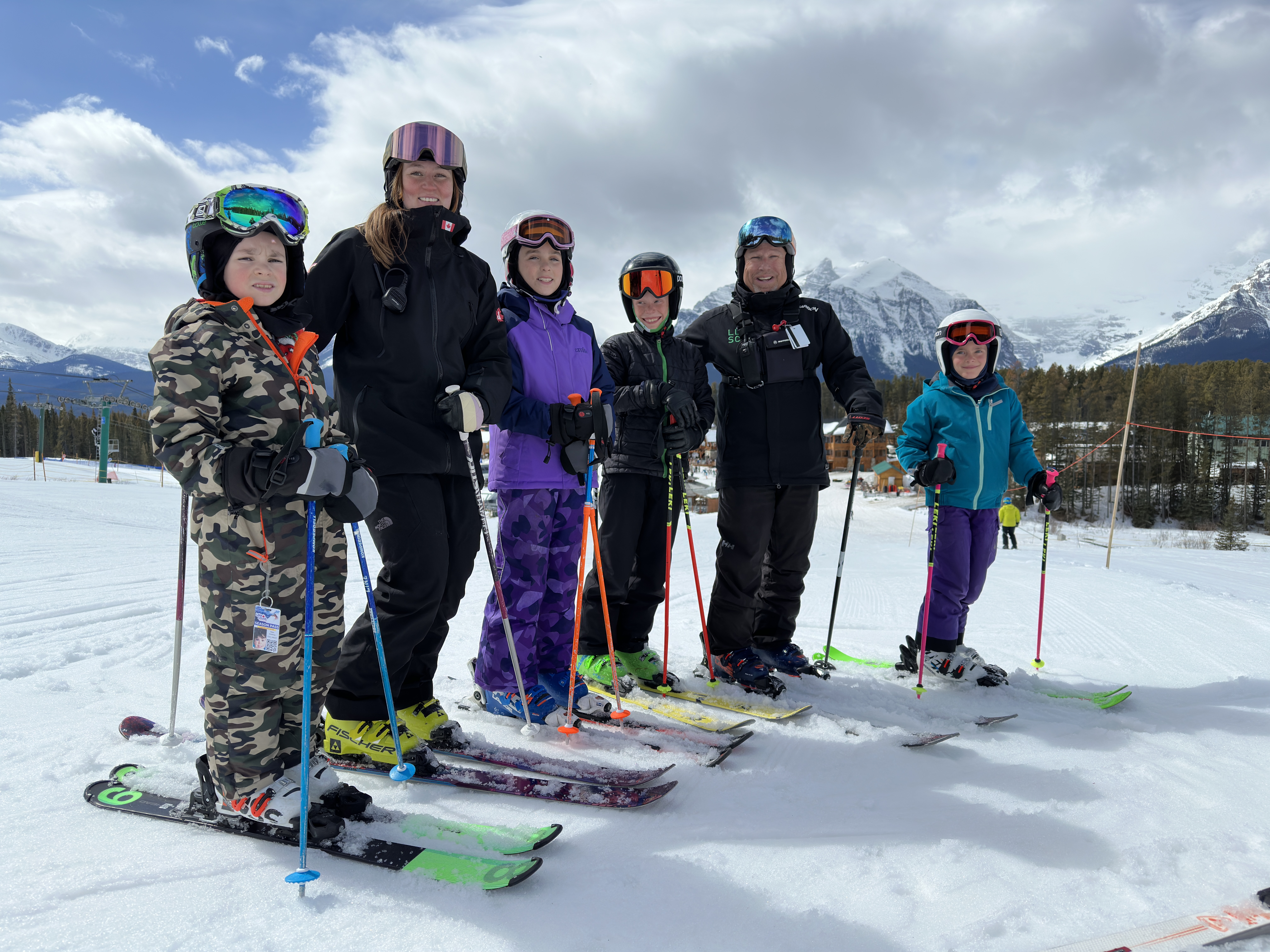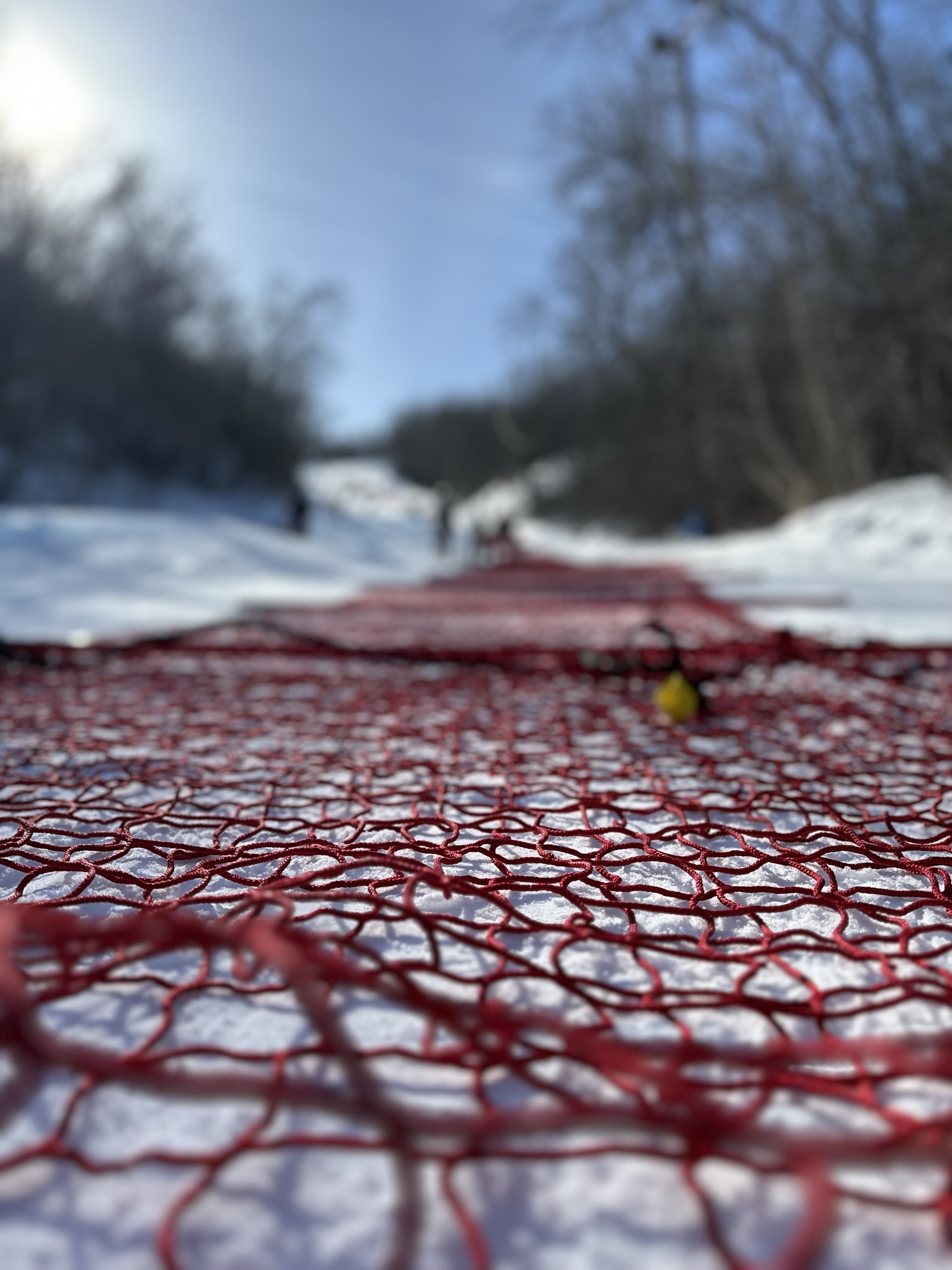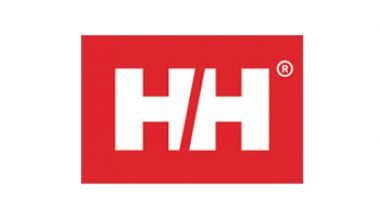Train to Race
BUILD THE SKI RACER & OPTIMIZE THE ENGINE
The start of the Train to Race stage is dependent on skiing skill and physical fitness, growth and maturation. Ski racers in this stage have completed their adolescent growth spurt. In the Train to Race stage, skiers are refining their technique and tactics through training and competition in a variety of events including downhill, super G, giant slalom, slalom, super combined, alpine team event and ski cross.
At the beginning of this stage, ski racers are starting to compete in local, regional and national level FIS races. As their competition skills develop and become more refined, near the end of this stage ski racers are seeking to be competitive internationally in FIS racing which will promote their formal entrance the gold medal pathway and national team status.
Training programs at this stage are individualized, and athletes will begin to specialize in their strongest discipline towards the end of the stage.
Key Concepts
This stage focuses on the development of athletes as young adults. By the time ski racers enter this stage, they have chosen ski racing as their specialization sport and they begin to refine their discipline-specific skills and physical capacities to execute proper ski technique in a variety of tactical environments. Everything in this stage is about optimizing physical preparation if the ski racer has passed their "peak height velocity" and can safely begin to build their strength, strength-endurance and power.
- Entrance into this stage is dependent on skiing skill and physical fitness progress and beyond the adolescent growth spurt.
- Participants enter this stage based on individual commitment, volume and intensity of training, and performance results.
- Participate in year-round, high-intensity, individual event specific training with specialized coaching in a dedicated training environment.
- Specialize in one sport and participate in complementary sports for the development of ski specific skills.
- Learn to perform skills under a variety of competitive conditions.
- Compete at a national level and develop international competition skills and abilities.
- Ski racers have a periodized yearly training plan, and ski racers are encouraged to complete sport-specific technical, tactical and physical fitness training nine to 12 times per week, with four to six of those training days on-snow.
- Optimize recovery and regeneration with scheduled (periodized) time for regular recovery and developing mental fitness.
- Optimize and balance sport, work/school, and family/friend life obligations.
- Athletes may transfer from one skiing discipline to another sport during this stage; transferring athletes may require remedial technical/tactical development to compete.
LTAD Parent Tips
Choosing a Program
Equipment
The proper equipment set up and fit can give the ski racers increased chances of having success in training and competition. Poorly fit, improperly adjusted, or un-tuned equipment can prevent the ski racer from successfully developing their technical and tactical skills while inhibiting their ability to perform on demand at races.
SKIS
Ski selection, both model and length are personal and take into account a ski racers ability and goals. Optimal ski length is determined in the following order: ability, weight and strength. Ski racers should consult their coach and work with a ski rep to gain the best access to the best equipment for the ski racer.
Skis should always be well taken care of including sharpened edges, wax on the bases and bindings adjusted correctly. It is the responsibility of the ski racer at this stage to maintain their ski equipment on a daily basis in preparation for both training and competition.
Train to Race ski racers should have at the minimum:
- Two pair of giant slalom skis.
- Two pair of slalom skis.
- One pair of Super G skis, optional second pair if ski racer is strong in SG.
- One pair of Downhill skis, optional second pair if ski racer is strong in DH.
- One pair of all mountain "rock skis," not twin tipped, that allow ski racers to ski the whole mountain without worry or fear of damaging their race skis. These skis can be purchased at a ski swap, and they are meant to be taken off-piste as part of a ski racers development and refinement of their technical skiing skills in a variety of terrain and snow conditions.
Ski clubs should be encouraged to provide loaner speed skis, super g and downhill, to ski racers who are entering in the train to race stage.
BOOTS
Boots must be professionally fitted to ensure proper flex, alignment and ankle articulation. Ski boots that inhibit the ankle to flex correctly will result in the ski racers inability to pressure the front of the ski adequately and place them in the dangerous backseat position on the ski.
Properly fitting boots are required to execute technical skiing skills successfully in a variety of tactical situations. Properly fitting boots will allow a ski racer to engage the ankle and apply shin pressure. The cuff of the boot should fit firmly around the lower leg. Less experienced ski racers should ski in a softer boot, as ski racers gain more experience and strength to flex the boot they can start using a more stiff four buckle boot.
HELMETS
Ski racers are required to wear a properly fitting hard shell helmet for giant slalom, super g, and kombi ski cross. It's best to check with your local club coach to ensure the ski racer has the proper helmet set up for each discipline.
All ski racers who are competing in FIS races are required to have the proper markings on the helmets to ensure it meets the safety standards for alpine ski racing.
Helmet fitting tips:
Make sure the pads fit flush against the skier's cheeks and forehead.
- The back of the helmet should not touch the nape of the neck.
- The helmet should fit snugly with a fastened chin strap.
- The helmet should sit level with the front edge just above the skier's eyebrows.
- The helmet should not shift when the skier shakes their head from side to side or front to back.
- The helmet should work with the skier's goggles and fit comfortably when both are worn together. Have the skier try on the helmet with their goggles when purchasing a new helmet.
HELMETS DO NOT LAST FOREVER! WORN AND DAMAGED HELMETS SHOULD BE REPLACED TO ENSURE THEY CAN ADEQUATELY ABSORB POSSIBLE FUTURE IMPACTS.
GOGGLES
- Goggles should have double lenses to help avoid goggle fog which inhibits a skier's ability to see.
- Ski racers must have a variety of goggle lenses available for different types of light and visibility; dark lens during bright days and low light lenses for flat light or bad weather days.
- Goggles should fit comfortably on the skier's face when wearing a helmet. There should be no gaps between the helmet and the goggles, especially when ski racers are training/racing in the speed disciplines.
SKI RACING SPECIFIC GEAR
Ski racing does require a few more pieces of specific gear to protect and promote ski racer confidence. Ski racers in this stage will train in more formal ski racing environments on a more frequent basis, racing suits and protective and mandatory.
BACKPACK/GEAR BAG
Ski racers should have a backpack where they keep all their gear in one location both at home and at the ski hill. Ski racers should check the items in their pack to ensure they have everything for training or races promotes independence, being responsible and accountable for their equipment.
SKI POLES
- Depending on the event contested ski racers will use different pole setups.
- Slalom, ski poles will have hand guards also known as pole guards, affixed to a straight ski pole.
- Giant slalom ski poles will have a little bend in the pole for increased aerodynamics to fit around the body.
- Speed ski poles used in super g and downhill will be bent to fit around the body to enhance aerodynamics.
RACING SUIT FEATURES
Racing suits at this stage are defined by the discipline contested:
- There are speed suits, giant slalom and slalom suits.
- Anatomically designed contour fit
- Front stretch zipper
- Available from ACA Shop.
PROTECTIVE GEAR
All ski racers should use protective gear when training in gates. Protective gear becomes personal choice at this stage of development, however, all ski racers are required to wear all protective gear required by the FIS Rules & Regulations for the discipline being contested. Local clubs and provinces may also have minimum requirements for protective gear.
- Shinguards
- Mouthguard or helmet chin guard
- Pole guards & Armguards
- Back Protector
- Helmet
Maintaining Balance & Education
While it is a challenge to raise active ski racers, it's not impossible to create a balance between participation in sports, family time, social time and education.
MAINTAINING A BALANCED FAMILY LIFE THAT FOSTERS THE DEVELOPMENT OF HEALTHY HABITS INCLUDES:
- Scheduling family time and activities where the family can be active together.
- Ensure that everyone in the family has time for rest and regeneration.
- Finding a balance between school, sports, and encourage ski racers to participate in other sports as desired.
- Working in partnership with your ski racer to develop a simple monitoring routine to assist ski racers with their recovery between training and competition bouts.
- Allow time for social interaction with other ski racers and friends in an unstructured environment like the park or ski area.
- Reduce screen time.
- Getting involved, as a parent, through volunteer activities at the ski racer's club.
EDUCATION BALANCE VARIES BETWEEN GRADES 11 & 12 AND INCLUDES SOME OF THE FOLLOWING PREVENTATIVE ACTIVITIES:
During this stage, ski racers begin to investigate their post-secondary options including university, completion of a gap year, attending a technical/trade school, or work-study.
The choice that a ski racer will make is largely dependent on their:
- Academic goals
- Athletic goals
- Career goals
In grade 11 and 12 (FIS U18) ski racers are faced with finishing up their secondary schooling and require the time away from ski racing to prepare and take Provincial exams for graduation. This does make scheduling and attending some key race events challenging at times. Each school and ski racer is different; it's essential for the coaches, parents and teachers to be aware of the individual ski racers goals and aspirations on and off the snow. Coordination and collaboration between skiing, school and parents is a critical success factor.
Now is the time to be realistic about future plans to ensure inclusion of post-secondary school requirements. Review the education plan with the coach to ensure both athletic and academic goals are achievable. Develop a personalized plan for grad that meets admission requirements. Usually a combination of school and online.
Grades are part of the process to reach the outcome goal of academic success. Ski racers should view school like they see a sport where homework equates to training and exams compare to competitions. To be successful academically and athletically, ski racers must prepare before taking the test. Success never comes easy; it requires hard work and careful planning and preparation to succeed in sport and school.
- Encourage active study breaks where the ski racers can complete a little physical activity from 5 - 15 minutes. Activities can include preventative and mobility exercises, core exercises, a spin on a bike, or a quick run around the block to raise the heart rate.
- Encourage the use of a student planner or calendar to assist with maintaining balance.
- Encourage the ski racer to communicate with their teachers; parent communication should reinforce the student contact when necessary.
- Provide appropriate notice for school absences.
Finding the right balance between sport and education is a permanent challenge for a young athlete. Take a look at this video which offers some advice on reaching your objectives.
REFERENCES:
ACA LTAD Train to Race Webinar
Sport for Life - Long Term Development in Sport & Physical Activity 3.0. Higgs, Colin & Way, Richard & Harber, Vicki, Jurbala, Paul, Bayli, Istvan. (2019). Long-Term Development in Sport and Physical Activity 3.0. Canadian Sport for Life. ISBN: 978-1-927921-62-3.
Canadian Sport for Life Article: Maximizing the Sport Experience for our Children by Dina Bell-Laroche
Adams, K. BC Alpine AGM Presentation: Education and Ski Racing - Finding a Balance
ACA LTAD Training and Competition Focus Matrix
ACA LTAD Training and Competition Volume Matrix


.jpg)


